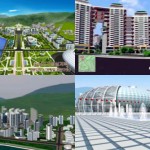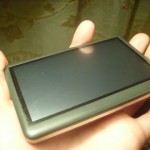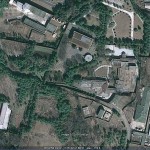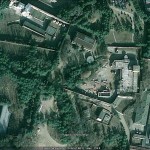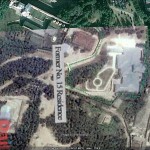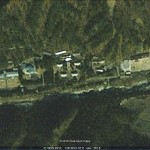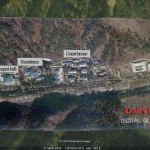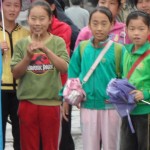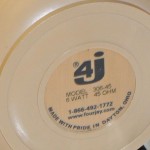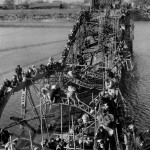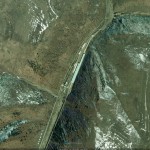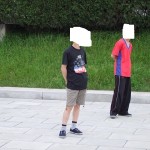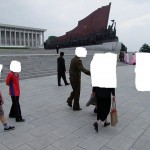With North Korea’s domestic security forces having been engaged in inspecting and confiscating vehicles being used for private gain since October 18th, the question of whether the so-called “servi-cha” industry will stay the course has become a central issue for many. This is because the presence or absence of the “servi-cha” can make or break the North Korean domestic economy, much like last year’s currency reform.
What is a “servi-cha”?
There are two types of “servi-cha”. The first are vehicles, mainly buses and trucks, owned by state organs and enterprises, which transport people and supplies in exchange for money. Enterprises use the money earned from the service to provide rations for the workers, cover transportation costs or obtain further raw materials for production.
The second type of “servi-cha” is those owned by individuals but registered as being owned by an enterprise; they are used for private gain. Collusion among three parties; the owner of the vehicle, the driver and the enterprise under whose name the vehicle is registered, is necessary in such cases. The owner of the vehicle acquires a car from, predominantly, China or Japan, whereupon cadres of a certain enterprise or local unit register the vehicle under the name of the enterprise or unit. A driver is hired thereafter, who then gets a drivers’ license from the cadre and sets about earn a profit by providing public transportation to residents or moving supplies. A portion of the money earned is given to the cadre, who will usually take a fraction for personal gain and register the remainder as company profit.
In general, two people man a “servi-cha”; the driver and his assistant. Alongside them, the owner of the freight being transported is present, and thereafter empty seats are taken by other passengers. If the car meets an inspection on the way to its destination, there is no problem; on paper, the vehicle is legitimate; it belongs to a unit, and the owner of the freight carries a transportation permit that he/she has received from the car owner. With a bit of alcohol and tobacco on hand to bribe the inspector, even the people occupying the empty seats are free to pass.
A North Korean license plate contains information on the institution the vehicle belongs to. As most people do not have a travel permit, they tend to prefer “servi-cha” that display the license number of a powerful institution. Transportation fees differ according to the type of license plate on the “servi-cha”. “Servi-cha” with plates from powerful groups charge higher fees than those with plates from food factories and agricultural offices, for example.
Vehicles are assigned numbers based on certain rules; license plates that reflect an auspicious date are deemed best; either 216 (February 16th; Kim Jong Il’s birthday) or 727 (July 27th; Victory Day). The license plate of a car given as a gift by Kim Jong Il to someone on the Central Committee might be assigned a number such as 216-11-101.
Furthermore, each department of the Party uses its own license plate number in order to distinguish ownership of vehicles. For example, the Party’s Finance and Accounting Department uses the number 02; 11 and 12 is reserved for Party offices; 12 to 14 for administrative units; 15 to 17 for the People’s Safety Agency; 18 to 20 for the National Security Agency; 21 for judicial branches; 22 for a unit under Party Department No. 39, 90 for the Central Party liaison office, and 46 for passenger transport services.
Inspections are stricter for those “servi-cha” with less impressive license plates. Travel permit checks become more thorough, and the inspectors ask more questions about the cargo. Thus, vehicle owners with “weaker” plates tend to have to give more bribes.
Origins of the “Servi-cha”
Public transportation virtually stopped in North Korea during the economic collapse which began in 1995, bringing about shortages of fuel and electricity. The country was incapacitated to the point that the government issued a decree calling on cadres to walk.
The first people to break the logjam were from foreign-currency earning units. They were able to use imported fuel to transport freight for other companies, at a price. Many enterprises quickly spotted the rising demand for freight logistics services, and started earning considerable profits by importing Chinese Dongfeng or Japanese second-hand trucks.
Demand for this was not limited to institutions and enterprises. Vendors also wanted to move their supplies around the country. The importing of Chinese products to the Rajin-Sonbong Special Economic Zone beginning in 1997 was followed by a rise in long distance cargo transportation to cities as far as away as Pyongyang, Hyesan, Sinuiju, Kaesong and Haeju.
The Different Types of “Servi-cha”
In general, trucks are a popular choice. This is because they can transport cargo and people at the same time. Buses, which are more readily owned by institutions and enterprises than trucks, are also often utilized for long-distance trips. A regular 45-person bus will often be full to capacity, with the central aisle lined with makeshift seats.
Party and military cadres also use their vehicles as “servi-cha”. It is commonplace for them to order drivers to look out for long-distance travelers as a means of earning extra money when the car is not in use. This also applies to the case of military cadres.
Sometimes, the seats of Japanese second-hand vehicles or Chinese second-hand jeeps are removed in order to take a maximum of eleven passengers.
Earning Money through “Servi-cha”
Use of “servi-cha” has vastly increased the quantity of goods and number of people crossing provinces, with goods smuggled in across the Tumen and Yalu Rivers in the north spotted in locations as far away as South Hwanghae and Kangwon Province, both of which border South Korea. Therefore, it can be said that production and trade between enterprises and vendors owes a great deal to the “servi-cha”.
For example, in 2001 the price of sweet potatoes peaked in the Rajin-Sonbong Zone. Demand for sweet potatoes was high in places north of Hamheung because climate conditions in that northern region are not favorable for cultivating the crop. While sweet potatoes were priced at 7 won per kilogram in South Hwanghae Province, in the Rajin-Songbong Zone the price exceeded 45 won per kilogram.
Vendors from Rajin-Sonbong were therefore able to increase profits 50% by selling Chinese everyday goods in Hwanghae province, and then make seven times more money selling southern sweet potatoes in the north.
It goes without saying that initial expenditure is required to pull this off. The cost of changing tires, of filling up the vehicle with gas, of bribing officials for travel permits and drivers’ permits, all added up to about 70,000 won. However, a round-trip could earn the “servi-cha” crew a net profit of 60,000 to 70,000 won. At the time, it was very good money.
Kim Kyung Hee’s “Servi-cha” Experiment
On her way to Kangkye in Jagang Province, Kim noticed a throng on the street, and approached, concealing her identity. They were people waiting for a “servi-cha”. Leaving her assistant and vehicle behind, Kim quietly stood in line with the other people.
Eventually, a 10-ton “servi-cha” arrived and people began scrambling for seats on the platform normally reserved for cargo. Paying her fare, 50 won, Kim also tried to board, but the driver noted her less than ordinary appearance and gave her the passenger seat.
After a few minutes of travel, a strange voice could be heard;
“Comrade, our time is up.”
The source of the sound was Kim’s watch. It was a message from her assistant, who was following the “servi-cha”. The driver, concerned for any number of reasons, immediately stopped and asked Kim to descend from the cab. In the end, the “servi-cha” left her behind on the road. It has been said that Kim went back to her vehicle and told her assistant that the “servi-cha’s are rather fun”.
